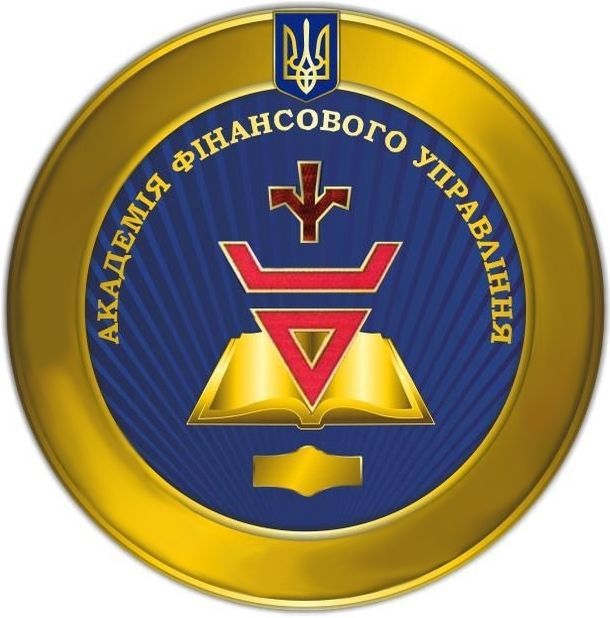
|
№ 1/2022
2. Sokolovska, A., & Petrakov, Ja. (2013). The concept of tax expenditures and the ways of its implementation in Ukraine. Finance of Ukraine, 11, 23–44. Retrieved from finukr.org.ua/?page_id=723&aid=639 [in Ukrainian]. 3. Altshuler, R., & Dietz, R. D. (2008). Tax expenditure estimation and reporting: A critical review. NBER Working Paper, 14263. doi.org/10.3386/w14263 4. Burman, L. E., & Phaup, M. (2011). Tax expenditures, the size and efficiency of government, and implications for budget reform. NBER Working Paper, 17268. doi.org/10.3386/w17268 5. Government of Canada. (2022). Report on Federal Tax Expenditures - Concepts, Estimates and Evaluations 2020: part 1. Retrieved from www.canada.ca/en/department-finance/services/publications/federal-tax-expenditures/2020/part-1.html. 6. Villela, L., Lemgruber, A., & Jorratt, M. (2010). Tax Expenditure Budgets. Concepts and Challenges for Implementation. IDB Working Paper Series, IDB-WP-131. Retrieved from idbdocs.iadb.org/wsdocs/getdocument.aspx?docnum=35170590. 7. Kassim, L., & Mansour, M. (2018). Tax expenditures reporting in developing countries: An evaluation. Revue d’économie du développement, 26 (2), 113–167. doi.org/10.3917/edd.322.0113 8. Heady, C., & Mansour, M. (2019). Tax Expenditure Reporting and Its Use in Fiscal Management: A Guide for Developing Economies. International Monetary Fund. Retrieved from www.imf.org/en/Publications/Fiscal-Affairs-Department-How-To-Notes/Issues/2019/03/27/Tax-Expenditure-Reporting-and-Its-Use-in-Fiscal-Management-A-Guide-for-Developing-Economies-46676 9. Polackova Brixi, H., Valenduc, C. M. A., & Li Swift, Zh. (Eds.). (2004). Tax Expenditures – Shedding Light on Government Spending through the Tax System. Lessons from Developed and Transition Economies. The World Bank. Retrieved from openknowledge.worldbank.org/handle/10986/15067. 10. Tax Expenditures in the Nordic Countries. A report from a Nordic working group, presented at the Nordic Tax Economist meeting in Oslo. (2009, June). Retrieved from www.ft.dk/samling/20091/almdel/sau/spm/106/svar/716635/847543.pdf. 11. Bruce, B. (2001, July). The End of Tax Expenditures as We Know Them? In Tax Notes, Special Report, 413–422. Retrieved from www.researchgate.net/publication/228132518_The_End_of_Tax_Expenditures_as_We_Know_Them. 12. Sugin, L. (1998). Tax Expenditure Analysis and Constitutional Decisions. Hastings Law Journal, 50, 408–474. Retrieved from ir.lawnet.fordham.edu/faculty_scholarship/57/. 13. Fleming, J. C., & Peroni, R. J. (2010). Can Tax Expenditure Analysis Be Divorced from a Normative Tax Base: A Critique of the “New Paradigm” and its Denouement. Virginia Tax Review, 30, 135–180. Retrieved from papers.ssrn.com/sol3/papers.cfm?abstract_id=1674544. 14. Palisi, P. (2017). Tax expenditure analysis – origins, debates and future prospects. Treasury Working Paper, 2017-03. Retrieved from treasury.gov.au/publication/tax-expenditure-analysis-origins-debates-and-future-prospects. 15. Bauger, L. (2014). The use of tax expenditures in times of fiscal consolidation, European Economy. Economic Papers, 523. Retrieved from ec.europa.eu/economy_finance/publications/economic_paper/2014/pdf/ecp523_en.pdf. 16. Bratić, V. (2006). Tax Expenditures: A Theoretical Review. Financial Theory and Practice, 30 (2), 113–127. Retrieved from hrcak.srce.hr/file/9199. 17. Craig, J., & Allan, W. (2002). Fiscal Transparency, Tax Expenditures, and Budget Processes: An International Perspective. NTA Papers and Proceedings. Retrieved from www.estimacionestributarias.com/archivos/Gastos%20tributarios.%20Craig%20and%20Allan.pdf. 18. Laporte, B., Caldeira, E., De Quatrebarbes, C., & Bouterige, Y. (2018). Tax Expenditure Assessment: From Principles to Practice. Methodological guide. Retrieved from ferdi.fr/dl/df-PSDXZuxEEh8LihnEhHUoFkjx/tax-expenditure-assessment-from-principles-to-practice-methodological-guide.pdf 19. De La Feria, R., & Ending, R. K. (2013). VAT Exemptions: Towards a Post-Modern VAT. In De La Feria, R. (Ed.). VAT Exemptions: Consequences and Design Alternatives, pp. 3–36. Wolters Kluwer. Retrieved from www.researchgate.net/publication/303863105_Ending_VAT_Exemptions_Towards_a_Post-Modern_VAT. 20. Schenk, A., & Zee, H. H. (2004, April 16). Financial Services and the Value-Added Tax. Taxing the Financial Sector: Concepts, Issues, and Practice. International Monetary Fund. doi.org/10.5089/9781589063167.071 21. Lang, J. (1993). Draft code of tax laws for the states of Central and Eastern Europe. Bonn: Federal Ministry of Finance [in Russian]. 22. Hashimzade, N., Heady, Ch, Myles, G., Oats, L., Scharf, K., & Yousef, H. (2014). The Definition, Measurement, and Evaluation of Tax Expenditures and Tax Reliefs (Technical paper prepared for the National Audit Office). 2014. Retrieved from ore.exeter.ac.uk/repository/bitstream/handle/10871/16391/TARC_Tax_Expenditures_and_tax_reliefs_09-07-14.pdf?sequence=2&isAllowed=y. 23. Kraan, D. J. (2004). Off-budget and tax expenditures. OECD Journal on Budgeting, 4 (1), 121–142. doi.org/10.1787/budget-v4-art6-en 24. Terra, B. J. M. (1996). Chapter 8. Excises. In Thuronyi, V. (Ed.). Tax Law Design and Drafting, pp. 246–263. International Monetary Fund. Retrieved from www.elibrary.imf.org/view/books/071/06711-9781557755872-en/06711-9781557755872-en-book.xml. 25. Cnossen, S. (2010). The Economics of Excise Taxation. International Studies Program. Working Paper, 10-18. Retrieved from www.researchgate.net/publication/254391989_The_Economics_of_Excise_Taxation. 26. EU Council. (2003, October 27). Directive 2003/96/EC restructuring the Community framework for the taxation of energy products and electricity. Official Journal of the European Union, L 283/51. Retrieved from eur-lex.europa.eu/legal-content/EN/TXT/PDF/?uri=CELEX:32003L0096&from=EN. 27. Commonwealth of Australia. (2021). Tax Benchmarks and Variations Statement 2020, pp. 160–165. Retrieved from treasury.gov.au/sites/default/files/2021-01/145906_2020-tbvs.pdf. |
|
|
|
| ACADEMY OF FINANCIAL MANAGEMENT |

|
|
|



